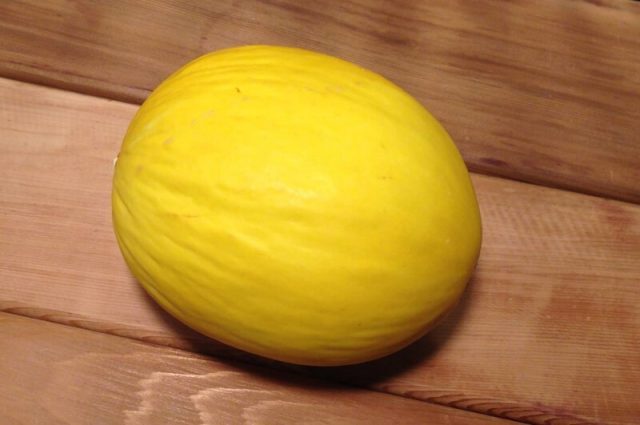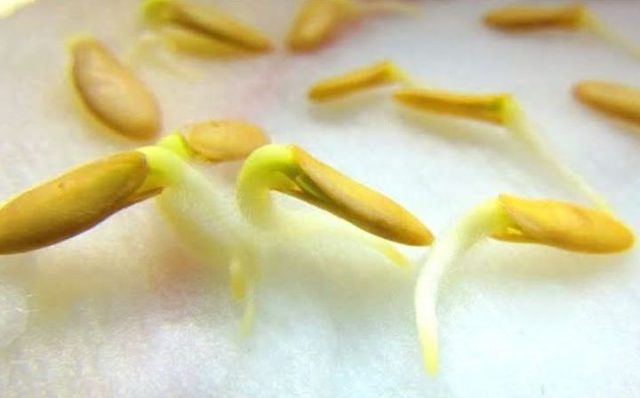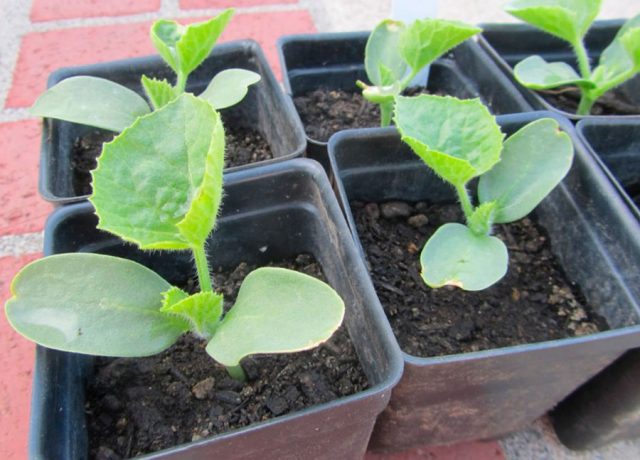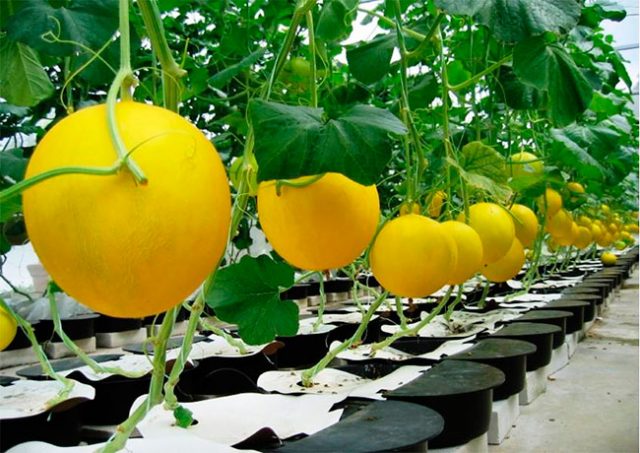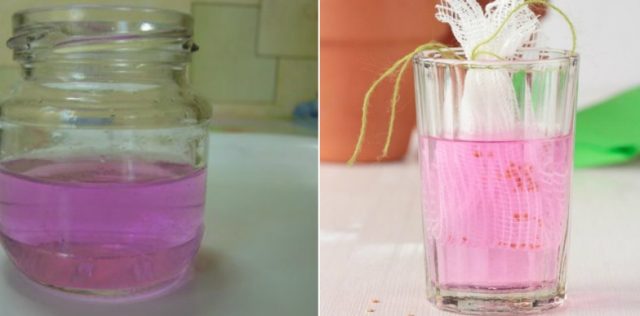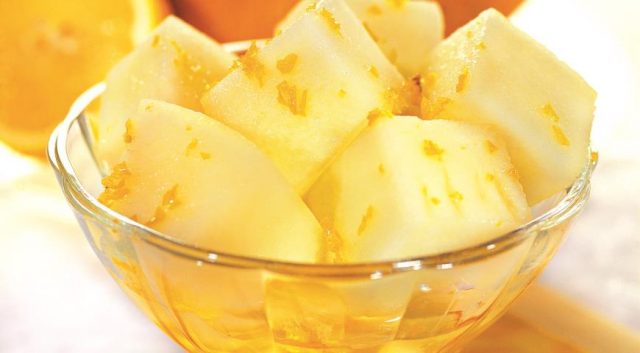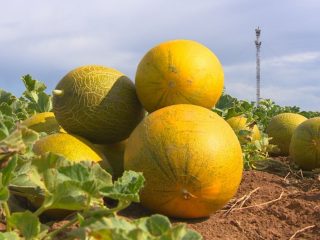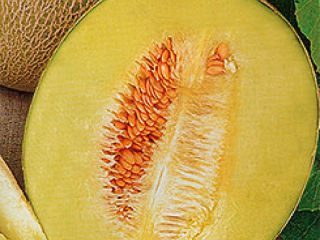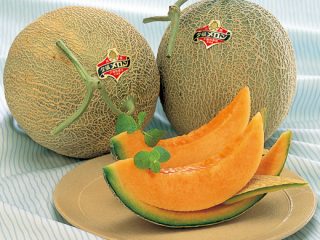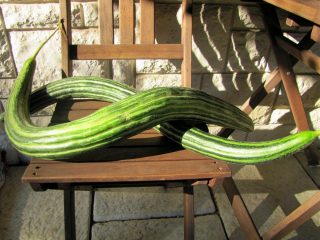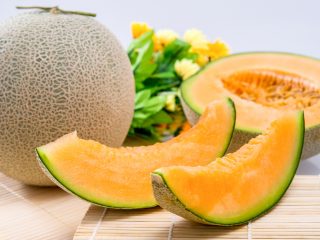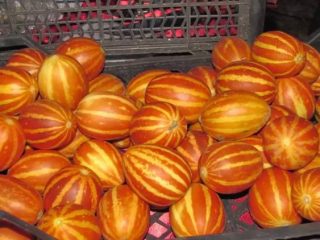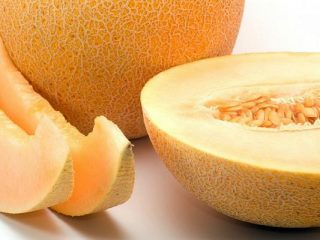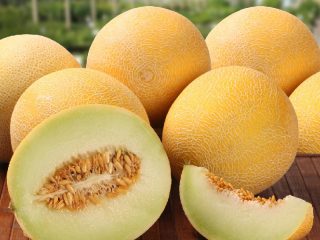Content
A universal crop, the fruits of which are used in cooking for preparing salads, soups, and confectionery - honey melon. It is also consumed as an independent tasty delicacy. It has a special aroma, sweet taste, and juicy, pliable flesh. This miracle product can be grown not only in Asian countries, but also in the southern regions of Russia.
Description of honey melon
This plant belongs to the Pumpkin class. In nature, honey melon can be found in Central and Asia Minor. Cultivated varieties of Honey Melon: “Canary”, “Ulan”, “Skazka” are grown in the southern zone of Russia, the Black Sea region, the Azov region, and in the Mediterranean countries.
The fruits of this plant are round, sometimes oblong, small in size with a bright yellow smooth skin. The weight of each fruit does not exceed 2 kg. The middle of the melon contains small, oblong, light yellow seeds.
The pulp is light beige in the center of the fruit and greenish near the peel, elastic, juicy. Its aroma is bright, characteristic of these plants. The taste of the fruit is sweet and rich.
Pros and cons of the variety
No deficiencies were identified in the Honeydew melon variety. Even a novice gardener can grow it. The fruits of this variety have high taste qualities.
The advantages include:
- high productivity;
- frost resistance;
- mid-early maturation;
- low maintenance requirements;
- sweet aromatic pulp;
- preservation of taste for several months after harvest;
- good transportability and keeping quality.
This variety is suitable for growing in greenhouses and open ground. Taste qualities do not depend on the method of cultivation.
Growing Honey Melon
This plant is heat-loving and light-loving. Seeds begin to germinate at temperatures not lower than + 20 °C. Basically, honey melon is rooted as seedlings in early spring in greenhouses and in early summer in open ground.
Preparing seedlings
For sowing seeds, use a container no more than 10 cm in diameter. In one such glass you can germinate 2 plants. To make the crops grow faster, they are soaked in advance in a small amount of liquid, laid out on gauze or cotton wool and sent to a warm place for several days. As soon as the seed cracks in the upper narrow part, it can be lowered into the ground.
The soil for honey melon seeds should be fertile and light. Before sowing, it is thoroughly crushed. Having slightly moistened the soil, sprouted seeds are lowered into it, and a small layer of fluffy soil is poured on top. Pots with seedlings are placed in a warm, well-lit place. During the day, the air temperature should not be lower than + 20 °C, at night + 17 °C. High temperatures from + 27 °C will ensure high germination.
Plants cannot be close to each other, leaves should not touch. As soon as the sprouts have 3 to 5 true leaves, they are prepared for planting in the garden plot. Before transferring to a new place, the seedlings are hardened off.They are taken to a cool room, where the air temperature during the day should be + 16 °C, and at night drop to + 13 °C.
Selection and preparation of a landing site
Honey melon is transferred to open ground at the end of May, when night frosts pass. Choose a site for planting that is well lit by the sun and protected from strong winds. Between each hole, make an indent of at least 0.5 m. You can fertilize the soil with humus, then water it with warm water.
Landing rules
The hole for planting is made small; honey melon seedlings cannot be deeply rooted. Approximately 1 kg of humus is added to the prepared hole, then watered with 1 liter of warm water. The grown plants are lowered into the resulting slurry, 2 pieces per hole. The seedlings are turned in different directions so that they do not interfere with each other’s growth. Afterwards, the roots are sprinkled with dry fluffy soil. If there is a possibility of night frosts, the seedlings are covered with film until the onset of consistently warm nights.
Watering and fertilizing
The first feeding of Honey melon must be done half a month after planting. Manure, saltpeter, and chicken droppings are used as fertilizer. These substances are diluted with water 1:10 and watered at the roots of the plants. Afterwards, every 2 weeks until fruiting begins, the procedure is repeated.
One of the main advantages of honey melon is its drought resistance. In regions with a lack of water, this crop is not irrigated at all. In central Russia and the south, agronomists advise watering the melon at the root once every 7 days. This will make its fruits more juicy.
Formation
As soon as the seedling produces its 6th leaf, it is pricked so that the plant sends out lateral shoots. Subsequently, they are also thinned out, leaving only the strongest.This promotes the flow of nutrients to the fruit rather than to the leaves.
Grown plants can be directed to grow up the trellis, or they can be released to curl along the ground. For vertical growth, a wire is pulled next to the bushes about 1.5 m from the ground. Afterwards, honeydew melon shoots are tied to it with a soft rope, directing their growth upward.
Harvesting
As soon as the Honeydew melon fruits are full, become uniformly yellow, and acquire a sweet melon aroma, they are removed from the beds. They pick the fruits carefully, trying not to damage or hit them. They last much longer whole.
If cold weather is expected, and there are a lot of unripe fruits left on the site, they are picked and sent indoors to ripen. For these purposes, special well-ventilated wooden boxes are prepared. Their bottom is lined with sawdust or straw. Place the fruits carefully in the prepared container so as not to damage them. They are left in a dry, bright place to ripen.
As soon as the fruits become uniformly yellow, they can be put away together with the container in a dark, cool place. Honey melon can be stored there for about 2-3 months.
Diseases and pests
Honey melon rarely gets sick and is almost not susceptible to pests. But the main types of diseases and harmful insects that feed on melons can attack the plant during the growth period.
Numerous fungal diseases can damage the aboveground part of the plant:
- powdery mildew;
- late blight;
- peronosporosis;
- copperhead;
- root rot.
To prevent fungal infections, honey melon seeds must be treated with a weak solution of manganese before planting.
All types of pests that prefer to feed on melons can also attack honey melon.
Main crop pests:
- aphid;
- spider mite;
- wireworm;
- scoop;
- melon fly.
To prevent the appearance of harmful insects on areas, it is necessary to promptly remove plant debris, rotten leaves, and pruned tree branches from the area. In summer, it is important to regularly plow the soil between seed rows. This will partially remove the eggs and larvae of pests.
Conclusion
Honey melon is an unpretentious melon crop that is easy to grow in any garden. It requires minimal care and grows and bears fruit even in arid regions. The pulp of its fruits is used as an independent delicacy and for preparing delicious natural, aromatic confectionery desserts.
